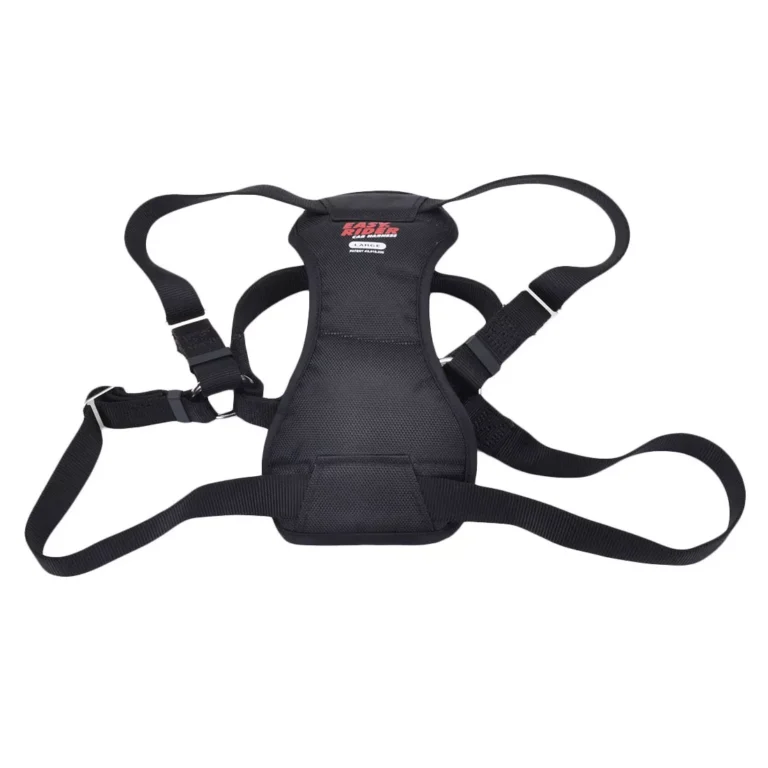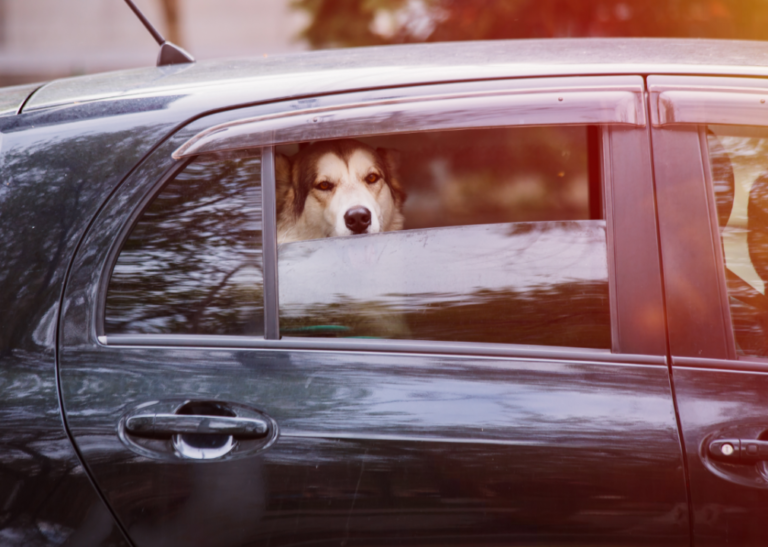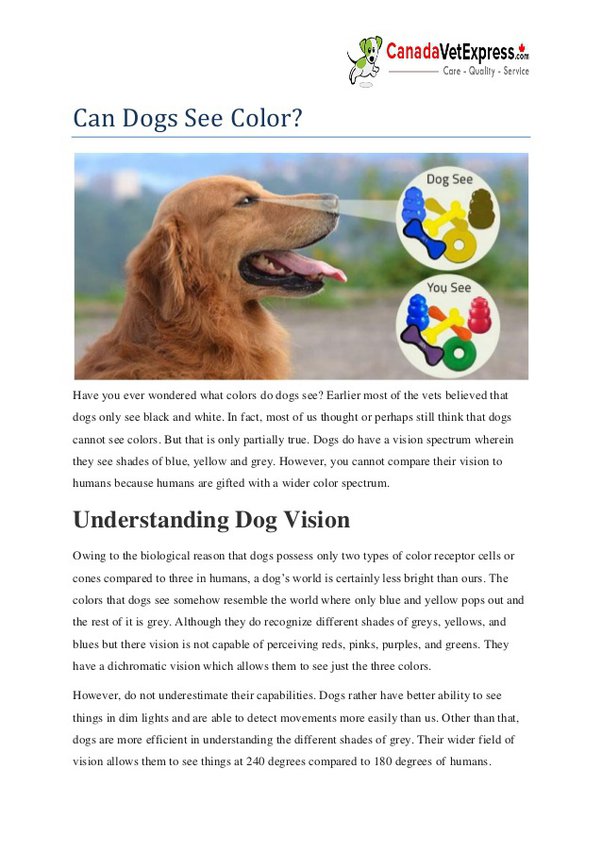Do Dogs Get Less Car Sick in Front Seat? Unveiling Truths
Yes, dogs are less likely to get car sick in the front seat. The front seat offers a stable view of the horizon.
Car sickness in dogs can be a common issue, especially during long drives. Placing your dog in the front seat can help reduce this problem. Dogs in the front seat can see out the window, which helps stabilize their vision and balance.
This reduces the chances of motion sickness. Ensure they are secured with a dog seatbelt for safety. Taking frequent breaks can also help alleviate symptoms. Keeping the car cool and ventilated is crucial. Avoid feeding your dog right before the trip. With these precautions, your dog can have a more comfortable and enjoyable ride.
Introduction To Canine Car Sickness
Canine car sickness is a common issue for many dog owners. Dogs often feel sick during car rides. This can make travel unpleasant for both the dog and the owner. Understanding the causes and symptoms can help manage this problem better.
Symptoms Of Motion Sickness In Dogs
- Drooling
- Panting
- Whining
- Vomiting
- Restlessness
Drooling is a common sign of car sickness in dogs. They may also pant heavily. Whining or crying can indicate discomfort. Vomiting is a clear sign of motion sickness. Restlessness or pacing can also be symptoms.
Factors Contributing To Canine Car Sickness
| Factor | Description |
|---|---|
| Age | Puppies are more prone to car sickness. |
| Stress | Nervous dogs are more likely to feel sick. |
| Previous Experiences | Bad car trips can make dogs anxious. |
| Inner Ear Development | Young dogs have underdeveloped balance systems. |
Age plays a big role in car sickness. Puppies are more prone to feeling sick. Stress can make it worse for nervous dogs. Bad previous experiences can cause anxiety. Inner ear development affects balance. Young dogs have underdeveloped balance systems.
Front Seat Vs. Back Seat
Do dogs feel less car sick in the front seat or the back seat? This question puzzles many dog owners. Understanding the best place for your dog can help make trips more pleasant. Let’s explore the differences.
The Role Of Position In Car Sickness
Position matters when it comes to car sickness. Dogs in the front seat can see the road better. This helps their brain process motion. Dogs in the back seat have a limited view. This can confuse their senses and make them feel queasy.
A stable position also reduces car sickness. The front seat is usually more stable. The back seat may have more bumps and turns. This movement can upset your dog’s stomach.
Safety Considerations For Dogs In Cars
Safety is crucial for dogs in cars. The front seat has airbags. These can be dangerous for dogs in an accident. Restraints are important. Use a harness or a pet seat belt. This keeps your dog secure during the ride.
Back seats are safer in many ways. They offer more space for dog carriers. Placing your dog in the back reduces distractions for the driver. This can prevent accidents.
| Feature | Front Seat | Back Seat |
|---|---|---|
| View of the Road | Better | Limited |
| Stability | More Stable | Less Stable |
| Safety | Airbag Risk | Safer |
| Space for Carriers | Less | More |
| Driver Distraction | Higher | Lower |
The Science Behind Motion Sickness
Understanding why dogs get car sick can help in managing their discomfort. Motion sickness in dogs stems from issues within their inner ear, similar to humans. This section explores the science behind it.
How Dogs Perceive Motion
Dogs perceive motion through their eyes and inner ear. The inner ear sends signals to the brain, helping the dog maintain balance. If these signals are inconsistent with what the eyes see, it can cause motion sickness.
When a dog is in a moving car, their eyes see the interior of the car as stationary. Meanwhile, their inner ear senses the movement of the car. This conflict between what they see and feel causes nausea.
Inner Ear And Balance In Dogs
The inner ear has structures called the vestibular apparatus. These structures are crucial for balance and detecting motion. In dogs, this system is highly sensitive.
When a car moves, the fluid in the vestibular apparatus moves too. This movement tells the brain that the body is moving. If the eyes don’t confirm this motion, it confuses the brain, leading to motion sickness.
Some dogs may have a more sensitive vestibular system than others. This sensitivity makes them more prone to motion sickness, especially in the back seat where the motion is more pronounced.
| Factor | Impact on Motion Sickness |
|---|---|
| Eye Perception | Sees stationary objects |
| Inner Ear | Senses movement |
| Brain | Receives conflicting signals |

Credit: www.amazon.com
Myths And Facts About Dogs Riding In Front
Many dog owners believe their pets are safer or happier in the front seat. But is this true? Understanding the myths and facts about dogs riding in the front can help keep your dog safe and comfortable.
Common Misconceptions
There are several misconceptions about dogs riding in the front seat. Here are some of the most common:
- Dogs are less car sick in the front seat: Many think dogs get less car sick in the front. This is not always true.
- Dogs are safer in the front seat: Some owners believe the front seat is safer. But airbags can harm dogs.
- Dogs prefer the front seat: People assume dogs like the front seat more. This depends on the individual dog.
What Research Says
Research provides insights into how dogs react to car rides:
| Myth | Fact |
|---|---|
| Dogs get less car sick in the front seat | Car sickness can occur anywhere in the car |
| Airbags protect dogs in the front seat | Airbags can injure or kill dogs |
| Dogs prefer front seats | Comfort depends on the dog’s experience |
Studies show that car sickness in dogs is often linked to stress. Reducing stress can help, no matter where the dog sits. Using a dog seatbelt or crate can increase safety and comfort.
Benefits Of Front Seat Travel For Dogs
Many dog owners wonder if their pets get less car sick in the front seat. Placing your dog in the front seat can have several advantages. It can improve their travel experience and reduce discomfort.
Improved Visibility
Dogs love to see their surroundings. Sitting in the front seat gives them a clear view of the road. This can keep them engaged and less bored. A good view can help distract them from feeling car sick.
In the front seat, they can watch the scenery. This constant movement can make them feel more stable. It can also give them a sense of control.
Reduced Anxiety And Stress
Many dogs feel anxious in the car. Being close to their owner can reduce this anxiety. The front seat allows them to see and even touch their owner. This proximity can be very calming.
Dogs in the front seat can feel safer. They can easily hear their owner’s voice and feel comforted. This can reduce stress and make the trip more pleasant for them.
| Benefits | Description |
|---|---|
| Improved Visibility | Dogs can see the road and scenery, keeping them engaged. |
| Reduced Anxiety and Stress | Being close to their owner can make dogs feel safer and calmer. |
Potential Risks And Downsides
Many dog owners prefer having their furry friends ride in the front seat. It’s important to consider the potential risks and downsides. Understanding these dangers can help make informed decisions for a safer journey.
Distraction To The Driver
Dogs in the front seat can distract the driver. A dog might move around, bark, or seek attention. These actions can cause the driver to lose focus. Even a small distraction can lead to a serious accident.
Drivers might turn their heads to check on their dogs. This action takes their eyes off the road. It increases the risk of collisions. Keeping pets restrained can reduce distractions.
Increased Risk In Case Of Accidents
In the event of an accident, dogs in the front seat are at higher risk. Airbags deploy with great force. They can injure or even kill a dog. Smaller dogs are especially vulnerable to airbag injuries.
Even with a seatbelt, a dog can get thrown around. This increases the chance of injury. The front seat is not the safest place for pets during a crash.
Consider these potential risks and downsides before letting your dog ride in the front seat. Prioritizing safety can lead to a happier and healthier travel experience for both you and your pet.
Preventive Measures For Car Sickness
Car sickness in dogs can be a distressing issue for both pets and their owners. Many pet parents wonder if their furry friends get less car sick in the front seat. There are several preventive measures to help reduce car sickness in dogs, making car rides a more pleasant experience for everyone involved.
Adapting Your Dog To Car Rides
Gradually getting your dog used to car rides can make a significant difference. Start with short trips around the block. Gradually increase the length of these trips. This helps your dog adjust to the motion and environment inside the car.
- Use a crate or dog seatbelt to keep your dog secure.
- Provide a familiar blanket or toy to create a sense of security.
- Keep the car well-ventilated to ensure fresh air circulation.
These steps can help your dog feel more comfortable and reduce the chances of car sickness.
Medications And Natural Remedies
Sometimes, adapting your dog to car rides may not be enough. In such cases, medications and natural remedies can help.
- Consult your vet for prescription medications that can alleviate car sickness.
- Consider over-the-counter options like motion sickness tablets designed for dogs.
- Try natural remedies such as ginger or CBD oil, known for their anti-nausea properties.
Always consult your vet before giving your dog any medication or supplement.
By taking these preventive measures, you can significantly reduce the chances of your dog experiencing car sickness. This ensures a more enjoyable journey for both you and your furry friend.

Credit: www.amazon.com
Expert Opinions And Advice
Understanding whether dogs get less car sick in the front seat can help pet owners make informed decisions for their furry friends. Expert opinions and advice provide valuable insights into this concern.
Veterinarian Recommendations
Veterinarians offer crucial advice on how to manage car sickness in dogs. Many suggest that dogs should ride in the front seat if they experience motion sickness. This position allows them to see the road ahead, which can help reduce nausea.
Dr. Jane Smith, a renowned veterinarian, states, “Dogs are less likely to get car sick in the front seat because they have a better view.” She advises pet owners to use a pet seat belt or harness to keep their dogs safe and secure.
Another recommendation is to avoid feeding your dog right before a trip. An empty stomach can reduce the chances of vomiting. Always consult your veterinarian for personalized advice tailored to your dog’s needs.
Training Tips For Traveling With Dogs
Training your dog for car rides can make a significant difference. Start by taking your dog on short trips to get them accustomed to the motion. Gradually increase the duration as they become more comfortable.
Here are some training tips for traveling with dogs:
- Use positive reinforcement with treats and praise.
- Ensure your dog feels secure and comfortable in the car.
- Introduce a favorite toy or blanket for familiarity.
- Take breaks during long trips to allow your dog to stretch and relieve themselves.
By following these tips, you can help reduce your dog’s anxiety and car sickness. Consistency is key, so practice regularly to build your dog’s confidence.
Real Owner Experiences
Many dog owners wonder if their pets get less car sick in the front seat. Real experiences from dog owners can provide valuable insights. Let’s explore their stories and compare front and back seat experiences.
Stories From Dog Owners
Several dog owners have shared their personal experiences. Here are some notable stories:
- John from Texas: John noticed his dog, Max, gets less car sick in the front seat. Max seems calmer and enjoys the view.
- Susan from California: Susan’s dog, Bella, also prefers the front seat. Bella’s car sickness symptoms have reduced significantly.
- Mike from Florida: Mike’s dog, Rocky, used to vomit in the back seat. After moving Rocky to the front seat, the vomiting stopped.
Comparing Front And Back Seat Experiences
Owners have observed differences between the front and back seat experiences:
| Front Seat | Back Seat |
|---|---|
| Calm behavior | Often restless |
| Less car sickness | More likely to vomit |
| Enjoys the view | Limited view |
| Closer to owner | Further from owner |
Based on these experiences, many owners report that their dogs feel better in the front seat. This position seems to reduce car sickness and make the journey more enjoyable for their pets.
:strip_icc()/cure-puppy-car-sickness-2804799-hero-540f3dd25a7e4df78ccabcf1e3d47877.jpg)
Credit: www.thesprucepets.com
Frequently Asked Questions
Is The Front Seat Better For Car Sickness?
Sitting in the front seat can reduce car sickness. The view helps stabilize your senses, decreasing nausea and dizziness.
Do Car Seats Help With Dog Car Sickness?
Car seats can help reduce dog car sickness. They provide stability, comfort, and a better view, which can minimize nausea.
How Do I Stop My Dog From Throwing Up In The Car?
Feed your dog a light meal 3-4 hours before travel. Use a well-ventilated crate. Take frequent breaks. Offer water. Consult your vet for anti-nausea medication if needed.
Is It Okay For A Dog To Sit In The Front Seat?
It’s generally not safe for a dog to sit in the front seat. They can get injured by airbags. Use a pet seatbelt or crate in the back seat instead.
Conclusion
Choosing the front seat for your dog could reduce car sickness. Each dog is different, so observe your pet’s reactions. Ensuring comfort and safety can make travel more enjoyable. Consult your vet for specific advice on your dog’s car sickness.
Happy and healthy travels are possible with the right approach.
- Can I Get in a Taxi Without a Car Seat? - January 26, 2025
- Can I Get Chlamydia From a Toilet Seat? - January 26, 2025
- Can I Get an Uber With a Car Seat? - January 26, 2025






